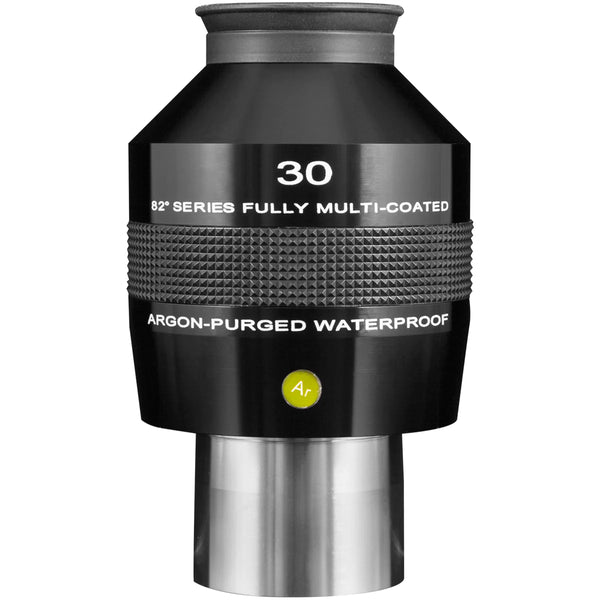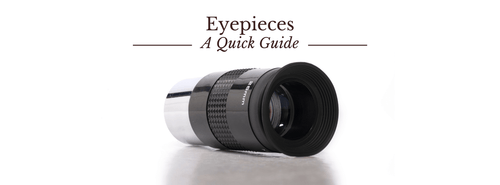Explore Scientific 82 Degree Series 30mm Waterproof Eyepiece | EPWP8230-01
EPWP8230-01


Explore Scientific 82 Degree Series 30mm Waterproof Eyepiece | EPWP8230-01
EPWP8230-01
Products in the Same Family
Why Purchase from All-Star Telescope?
Free Expert Support
Whether you are a first timer needing help with setting up or an enthusiast that can't quite make that one thing work, our expert staff are ready to support your needs. With decades of knowledge and first hand experience we've been there and we can help you through it!
Stress Free, Secure Transactions
You can trust purchasing and delivery with All-Star Telescope. All of our transactions are 100% secure and Level 1 PCI DSS compliant thanks to Shopify's ShopPay platform. For additional protection, we insure 100% of the value of every shipment we make. If it get's lost during shipment, we replace it. If it gets damaged during shipment, we replace it. We make sure your product arrives exactly as you would expect it to; we promise.
We also ensure privacy protection. We never keep any of your credit card information on file and any of your personal data is stored according to our policies.
30 Day Return Policy
Buy with confidence knowing that we accept returns up to 30 days after purchase. We want you to have something you will actually use and we are confident that we keep good quality products in our store with No Junk.
Price Match Promise
Shipping around for the best price is tough, we make it easier by offering the best pricing in the market. But if you find a better price on an in-store item somewhere else we will match it!
Product Description
The 30mm 82° Series Waterproof Argon-Purged Eyepiece is a popular focal length in the upper-medium power magnification class providing both super-wide apparent field and generous eye relief.
It is perfect for any application where more power is desired including observing globular star clusters, planetary nebulae, the bright cloud structure near the nucleus of comets, initial observations of planets, and (with the proper safe filtration on your telescope), observations of active regions of the sun. Use with Explore Scientific Focal Extenders for 2X, 3X, or 5X magnification increases while maintaining the eyepiece native apparent field and eye relief.
Using advanced computer design, combinations of low dispersion and high refractive index optical glasses, and durable enhanced multilayer deposition (EMD) coatings, Explore Scientific 82° Series super wide field eyepieces are optimized to produce high contrast, high resolution, and superior flat field characteristics. The visual effect of these eyepieces with their long eye-relief and their 82° apparent field is truly a full-immersion experience. Your eye is relaxed, allowing you to easily use the “averted vision” technique to study faint details across a huge field-of-view.
Each eyepiece is meticulously assembled into precision machined metal lens barrels that maintain the perfect alignment of the optical train for years of rugged use in the field. To keep internal reflections to a minimum, all internal surfaces of the eyepiece barrel are flat black, as well as the edges of the lenses themselves to minimize the scattering of light within the lenses themselves.
Explore Ultra-Wide Eyepieces - Comfort, Quality, Value. Explore Scientific 82° Series eyepieces, with their 82° apparent field of view, immerses you in a very comfortable ultra-wide field that naturally promotes relaxation at the eyepiece. When you relax your eyes and take in the scene presented before you, it is much easier to observe for longer periods of time, and details begin to materialize that may not have become apparent to you at first glance. Another great benefit of ultra-wide eyepieces is the ease with which you can gaze, not directly at an object, but slightly to either side. This skill, called using averted vision, is especially helpful when observing faint objects, because using averted vision puts the image on a part of your eye that is more sensitive to light, allowing you to see fainter images.
Use with the Explore Scientific 2X Focal Extender (2.0-inch O.D.) to double the magnification of this eyepiece (making it an effective 15mm focal length while maintaining the same eye relief and apparent field.
Specifications
| Item Number | EPWP8230-01 |
| Focal Length | 30mm |
| Length | 131mm |
| Width | 82mm |
| Weight | 35.5oz (1000g) |
| Barrel Size | 2.00" |
| Eye Relief | 22.0mm |
| Field Stop Diameter | 43.0mm |



